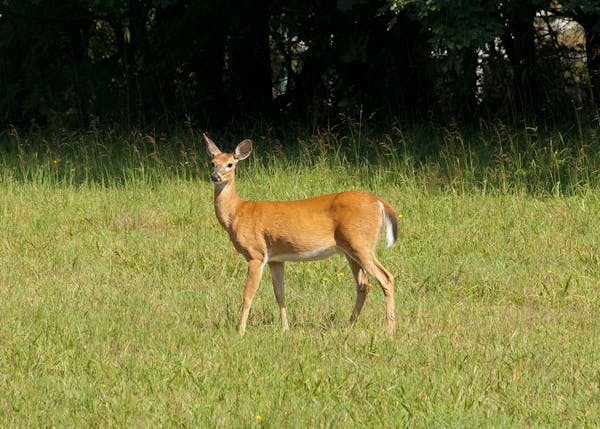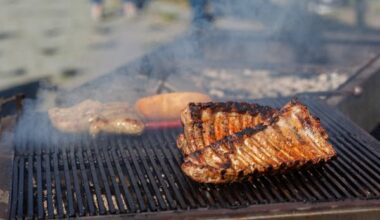Where do deer go in summer? As a hunter, knowing where deer go in the summer can help you hunt better. This knowledge is key for scouting and hunting mature bucks in the fall. It’s useful whether you hunt on public or private land.
We’ll look at 5 secrets to improve your summer scouting. These secrets include the role of trail cameras and the effect of mast production. Get prepared to question some common beliefs and understand how deer survive the summer.
Are you ready to learn about whitetail deer’s summer habits? I know you are. Let’s get right into it!
What Are White-tailed Deer?
The smallest deer species in North America, whitetailed deer range from southern Canada to South America.
They usually live in fields and meadows, finding shade in patches of coniferous and broad-leaved forests during the sweltering summer months.
They typically stay in woods throughout the winter, favouring coniferous trees that offer protection from the weather.
Scouting Strategies
To be a top summer deer scout, start by getting to know the land you’ll hunt. Use satellite images, maps, and aerial photos to spot important features and deer paths.
This helps you plan better routes and find where deer like to hang out.
Familiarize Yourself With The Property
Studying satellite images, maps, and aerial photos of the hunting area is key. Look for ridges, drainage systems, and changes in cover types that affect deer paths.
Mark these spots on a map or GPS app for easy navigation during scouting.
Identify Cover Types and Potential Hotspots
Focus on the different cover types deer use in summer, like thickets and areas with lots of food trees.
Find where these spots meet to create great scouting areas. Look for trails, tracks, and droppings to spot where deer often move and rest.
Knowing the property and its key spots helps you scout more efficiently. This prep work is crucial for finding deer during the summer.
When hunting season comes, you’ll be ready to track deer movements better.
Think About Timing: Summer vs Fall Patterns
Deer behaviour and where they live to change a lot from summer to fall. Hunters need to know these changes to scout and hunt whitetails well.
Understanding how deer move and where they like to be in both seasons is key.
In summer, you might see lots of deer signs like tracks and rubs. But, these signs don’t mean deer use the area as much in fall.
Behaviour and habitat preferences change a lot from summer to fall. So, look for stable places and paths that deer use all year.
Summer is when bucks move in predictable ways, going from where they sleep to where they eat.
But, as the breeding season comes, they move more randomly. They cover big areas and go beyond their usual spots. This makes them harder to track in fall.
Knowing how deer move and live in summer and fall helps in planning a good hunt. Focus on stable places and paths instead of just looking for new signs.
This way, you can guess where deer will be in fall better.
Using trail cameras after the first cold front of the season can show how deer change their ways.
By understanding deer summer and fall patterns, hunters can improve their scouting and hunting plans. This can help them have a better chance of success.
Focus on Travel Routes: Identifying Pinch Points
Looking for productive hunting spots means focusing on deer summer travel routes and pinch points. These are key paths deer use to move around.
Even in summer, look for faint trails that connect different cover types. They are likely to be busy paths.
Areas where deer must funnel through due to the terrain or vegetation are great spots for hunting. These deer pinch points are key areas to know.
By spotting these deer travel corridors in summer, you set yourself up for success in hunting season.
Look for Compacted Trails
While scouting deer trails, search for trails with compacted and worn vegetation. These trails are often used a lot by deer as they move between places they eat and sleep.
Deer tend to stick to the same paths, so knowing these deer summer to fall travel patterns helps you understand their habits.
Connect Cover Types
Deers often move through the landscape using corridors linking different cover types. For example, they might go from dense brush to open fields or from mature forests to young growth.
By identifying these deer travel corridor identification spots, you can see how deer move and where they might be at different times of the year.
The secret to good deer trail scouting is to look for signs of well-used paths. By focusing on these travel routes and pinch points, you can get ahead in your hunting and increase your chances of success all season.
Where Do Deer Go in The Summer?
When summer comes, white-tailed deer look for places with lots of food and comfy spots to rest. Knowing where they go in summer helps you find mature bucks later.
1. Scout for Mast Producers
Deer love areas with trees that produce acorns, persimmons, and other fruits. These trees are key to their summer diet.
Use binoculars to spot these trees from above. Note where you see deer eating or signs of them.
2. Identify Feeding Areas
Deer also eat grasses, forbs, and crops that are rich in nutrients. Look for deer trails, droppings, and signs to find where they eat.
These spots might be in open fields, near field edges, or in dense woods. Knowing where they eat is key to scouting.
3 . Shaded Areas with Water Sources
Deer are often found in shaded areas with ample water sources. They seek out creeks, rivers, and ponds to stay hydrated and cool during the hot summer months.
These areas provide a reprieve from the heat and are essential for their survival.
Look for deer tracks and trails near these water sources, as deer frequently visit these spots to drink and cool off.
4. Fields and Meadows
Deer move to fields and meadows abundant in grasses, forbs, and agricultural crops, which provide the nutrients they need for growth and energy.
These open areas are rich in food resources, making them attractive to deer. Agricultural fields, in particular, can be hotspots for deer activity as they offer a variety of crops like soybeans, corn, and alfalfa that are highly nutritious.
Observing these areas during early morning or late evening hours can give you a good chance of spotting deer as they come out to feed.
5. Dense Woods and Thickets
Dense woods and thickets offer protection from predators and harsh weather, making them favored resting and bedding areas for deer during summer.
These areas provide a safe and cool environment where deer can rest during the day. Look for signs such as deer beds, which are flattened areas where deer have laid down.
The dense foliage also helps conceal deer from predators and hunters, making it a strategic location for their daytime hideouts.
This info is crucial for finding mature bucks and planning your hunt in the fall.
Essential Summer Scouting Gear
Scouting for deer in the summer needs more than just good eyes. You must also be ready for the heat.
It’s important to stay hydrated, protect yourself from the sun, and keep insects and snakes at bay. This way, you can spend more time in the field without getting worn out.
Hydration and Sun Protection
Dehydration can hit fast in the summer heat. Always carry a big, insulated water bottle or a hydration pack.
Add electrolyte tablets or mixes to your water to replace lost minerals. Also, wear clothes that are light, breathable, and protect you from the sun.
Insect and Snake Safety
Flies and ticks can be a big problem, and they might even spread diseases. Bring a good insect repellent and put it on your skin and clothes. Wear boots that cover your feet well and tuck your pants into your socks to avoid tick bites.
Watch out for snakes, especially where the bushes are thick, and wear boots that keep snakes out. Getting ready for your summer scouting trips is key to making the most of your time. Stay hydrated, cool, and safe. Your hunting efforts will pay off.
Conclusion
By using the tips and techniques from this article, you’re on your way to mastering deer summer scouting. You’ll learn how to spot their summer spots and how they move. This knowledge is key to a great hunting season.
Don’t let your hunting season be average. Use summer scouting to get ahead. Knowing where deer live and move will help you catch them off guard. Stay focused and see your hard work pay off when hunting season comes.
Now while others may love hunting deer, you may be part of those who love to simply watch them. Check this article out if you fall in that category.


